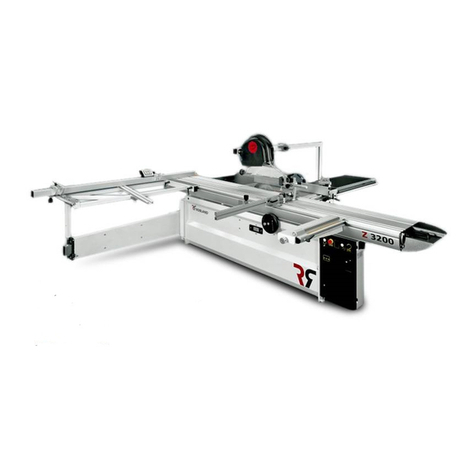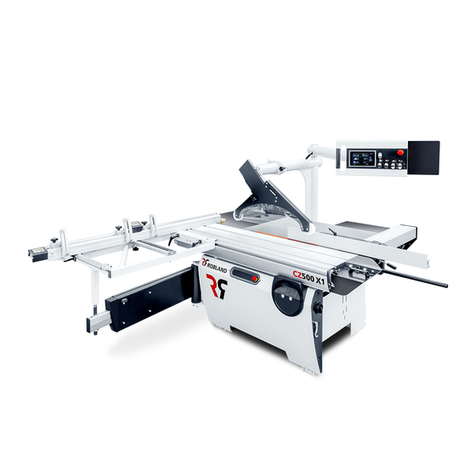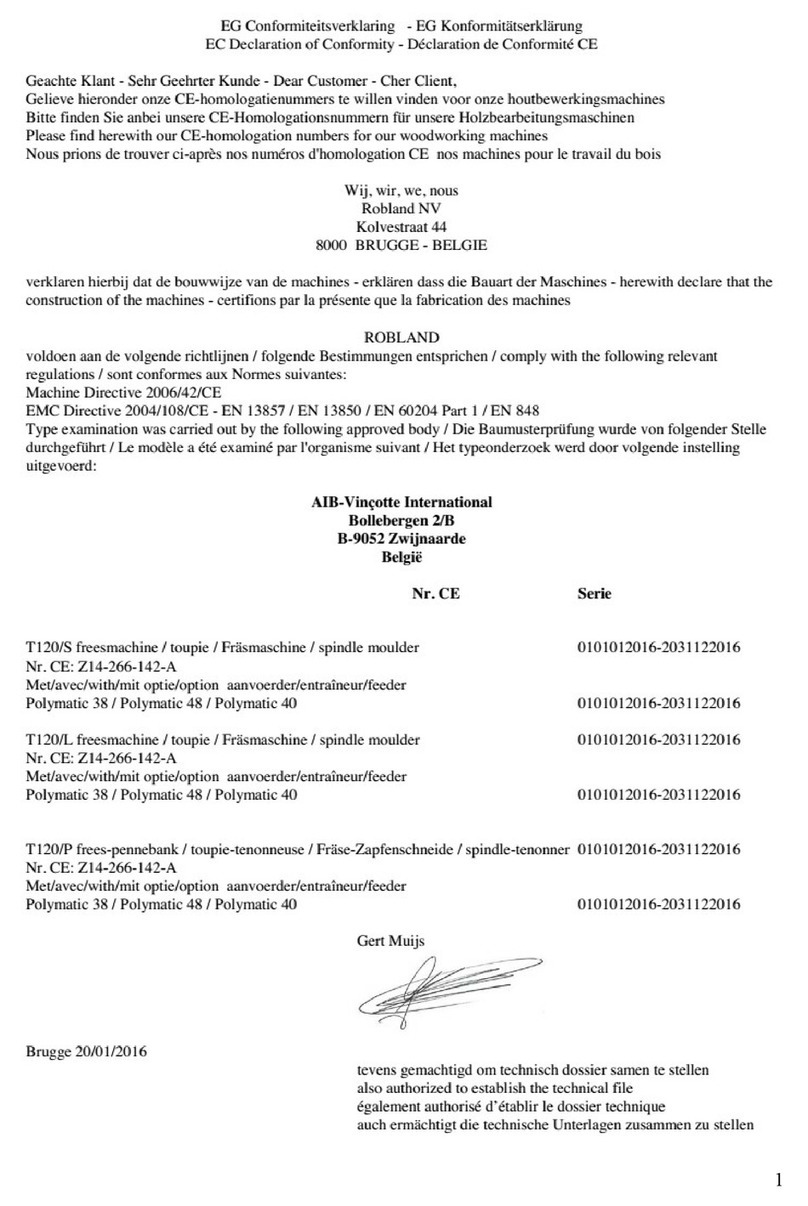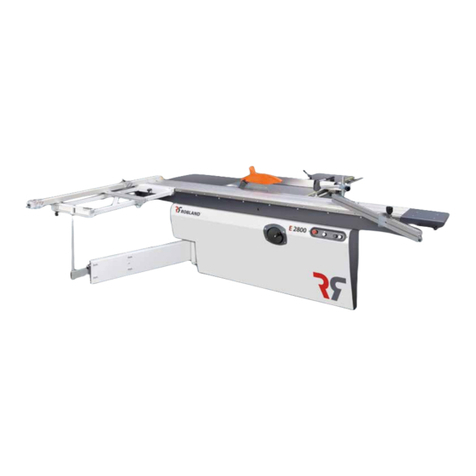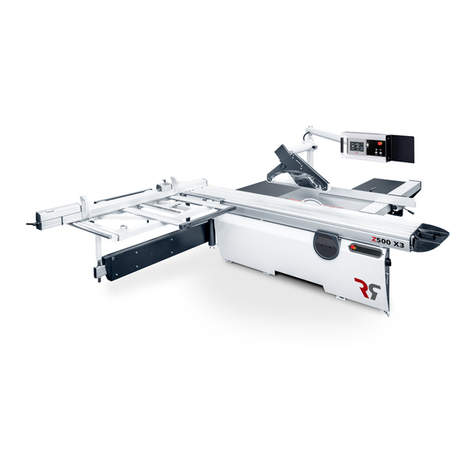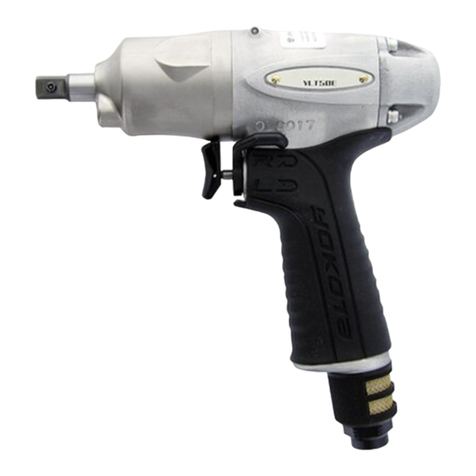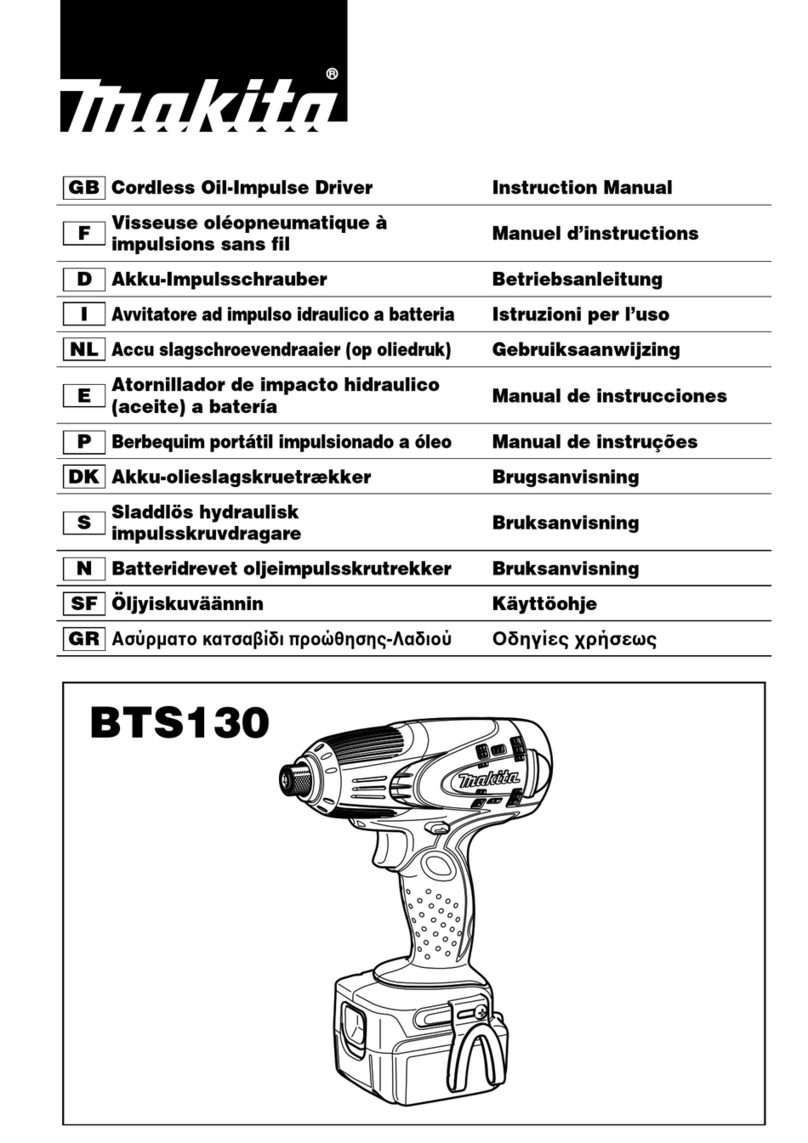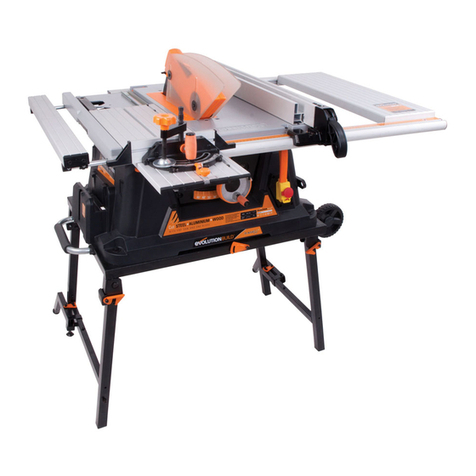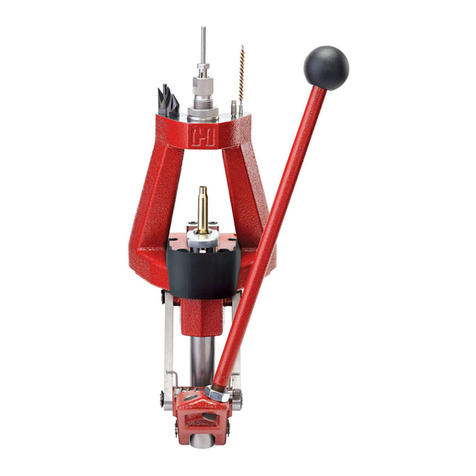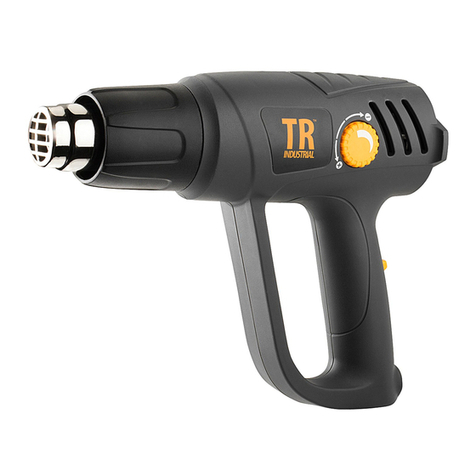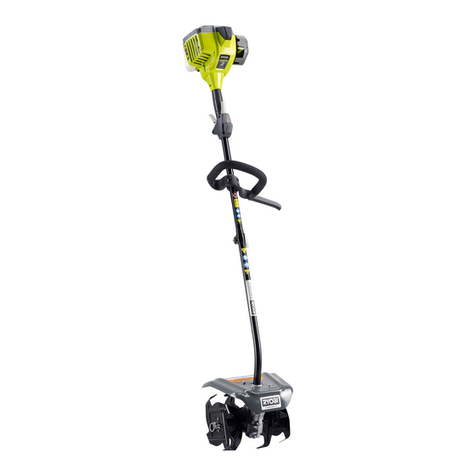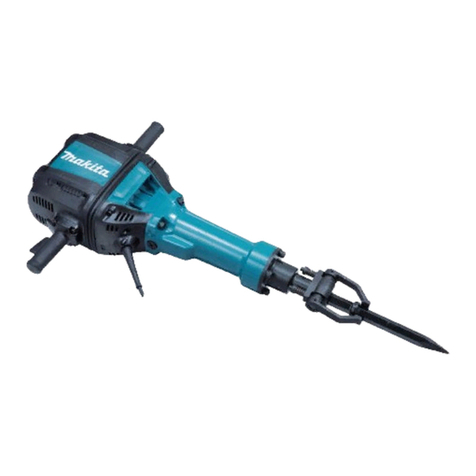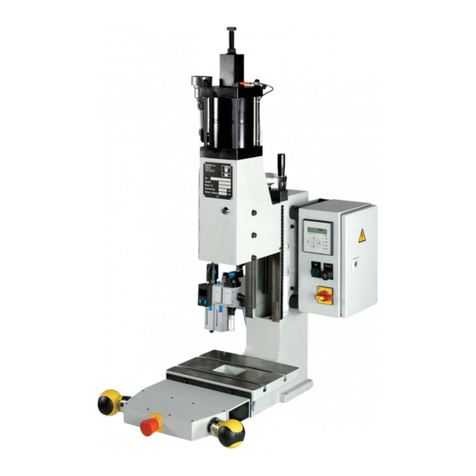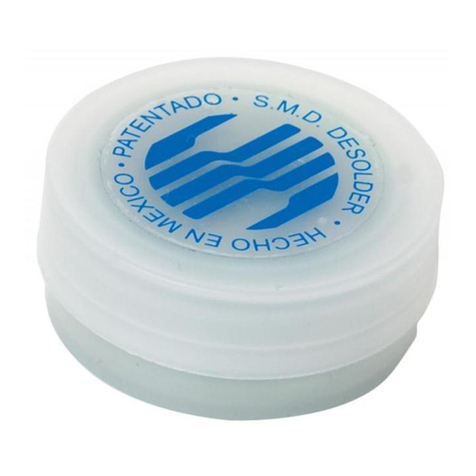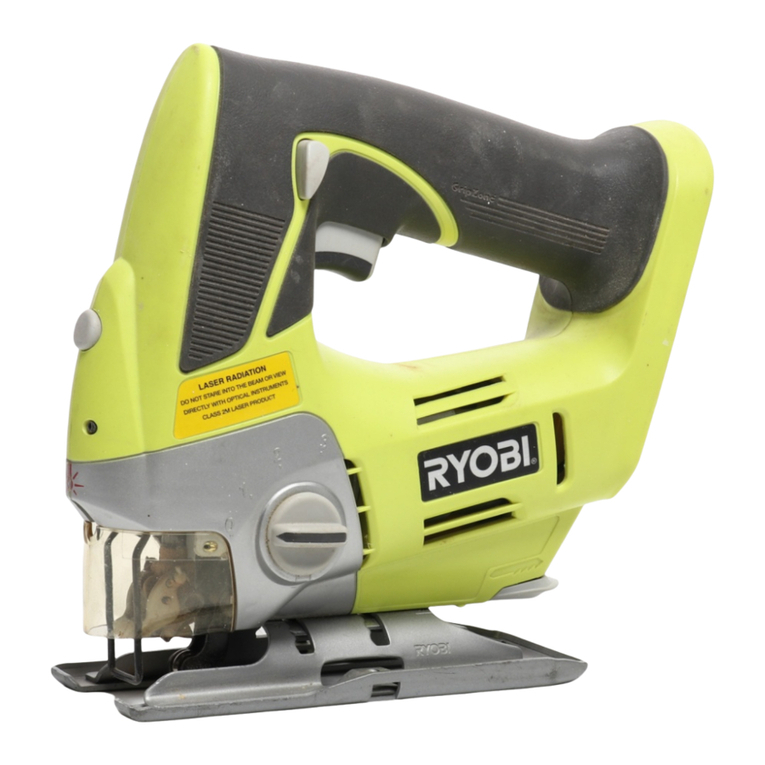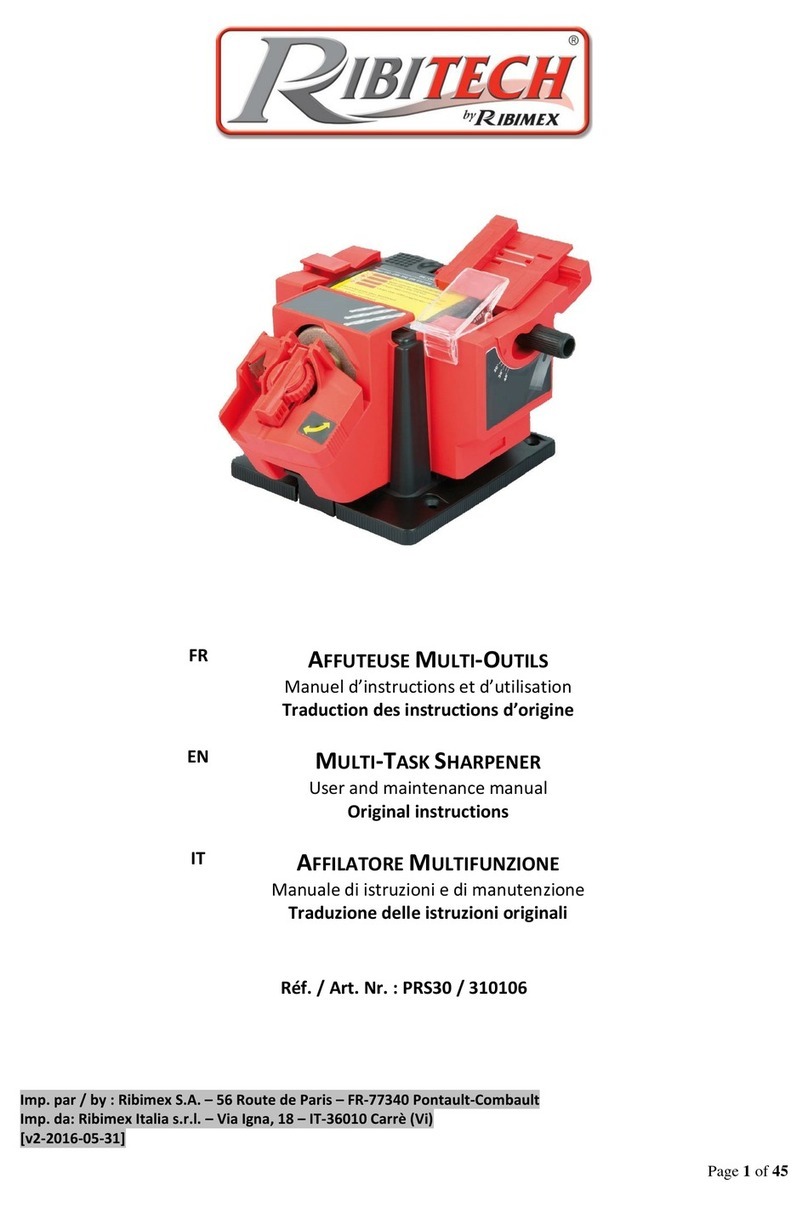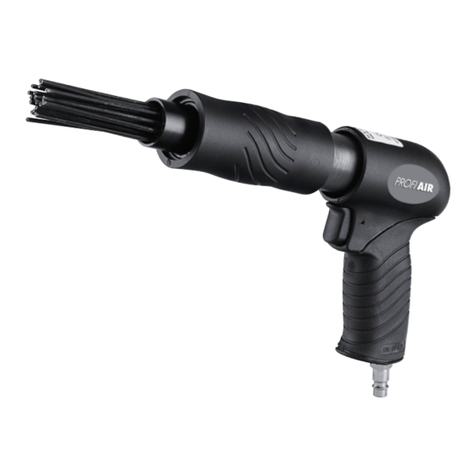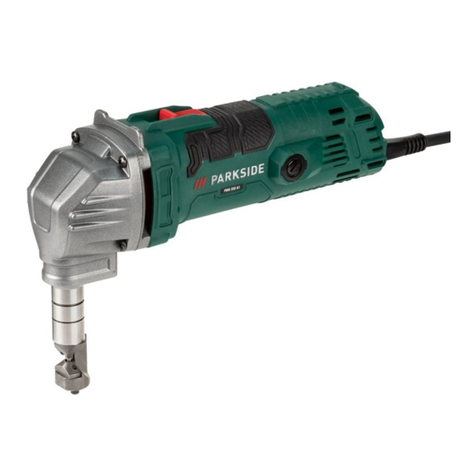Robland X Series User manual

Serie-X
Instructionmanual
ROBLAND

Contents
-
Generalinformation
2
-
Safety
and
maintenanceinstructions
3
-
Operatinginstructions
4
-
Explanation
of
accoustic
levels
6
-
Dustemmissionvalues
7
-
Types
of
tools
10
-Technical
data
11
-
Generaldimensions
12
-
Transportation
15
-
Electricalconnection
.
15
-
Circular
saw16
-
Installation
of
tools
19
-
Adjusting
the
spindle
height
(fig.
13)19
-
The
spindle
fence
and
woodpushers
(fig.
14-15-16-17)
20
-
Ring
guard
fence
(fig.
10+ 18
bis)
22
-
Tenoningguard(fig.
19)23
-
Changing
and
setting
ofthe
planerknives
(fig.20)
24
-
Adjustment
ofthe
planertables(fig.
21)24
-
Planer
fence
(fig.
22,23)25
-
Planerprotection(fig.
24)25
-
Planertablelock(fig.
25,26)26
-
Thicknesseradjustment(fig.
27)27
-Mortiser
28
-
Putting
the
mortiserunitonto
the
frame(fig.
29)28
-
Heightadjustment(fig.
28)28
-
Planer
protection
during
mortising
(fig.
30)28
-
Fixing
the
mortisingchuck
tothe
spindle(fig.
30)28
-
Maintenance(fig.
32,33)30
-Problems
32
-
Electricalcomponentsspareslist
32
-
Explodedviews
33
-
Importendinstructionswhenordeningspareparts
60
-Attention..
..60

Operating
instructions
-The
following
recommendations
for
safe
workingmethods
are
given
as
examples,additional
tothe
information
onthe
machinecharacteristics.
-
Whenworkingwith
the
spindle
fence
orthe
spindle,between
2
fixed
stops
and
when
tenoning,safetyequipmentmust
be
used.
-
Nevertheless,
the
user
must
also
follow
the
operatinginstructions
in
order
to
avoid
accidents.
1.
Training
of
machine
users
Itis
absolutelynecessary
that
the
spindle-moulderuserreceivescomprehensivetraining
regarding
operating
and
adjusting
the
machine.
In
particular
:
a)
the
risksinvolved
in
workingwith
the
machine;
b)
the
operatingprinciples,
the
correctusage
and
adjustment
ofthe
machine;
c)
the
correctchoice
ofthe
tools
for
eachoperation;
d)
the
safe
handling
of
parts
tobe
machined;
e)
the
position
ofthe
hands
in
relation
tothe
cutterblock;
f)
storing
the
pieces
ina
safe
way
before
and
after
machiningthem.
2.
Stability
In
order
tobe
able
tousethe
machine
ina
safeway.
itis
absolutelynecessary
to
place
itina
stableposition
onthe
ground
or
another
stablesurface.
3.
Adjustment
and
installation
a)
Disconnect
the
machine
from
its
power
supply
before
every
j
b)
The
recommendations
ofthe
manufacturer
must
befollowed
when
adjusting
and
installing
the
tools.
c)
The
tools
must
be
suited
tothe
material
which
hastobe
worked
in
order
to
assure
a
safe
and
efficient
usage.
The
tools
must
be
correctly
sharpened
and
installed,
with
toolholders
that
are
carefully
balanced.
4.
Handling
of
tools
In
order
to
avoidseverecuts,safetymeasures
must
be
takenwhenhandlingtools.
5.
Installing
tools
Special
equipment,such
as
toolsettinggauges,must
be
onlyusedwhen
the
machine
isnot
operating.Tableinsertringsmust
be
used
in
order
to
reduce
toa
minimum
the
spacebetween
the
table
andthe
spindleshaft.
6.
Rotationdirection
and
choice
of
speeds
Itis
veryimportant
that
the
chosentoolturns
inthe
rightdirection.When
the
piece
is
presen-
ted,
the
operator
must
takecare
that
the
workpiece
isfedinthe
correctdirection
and
that
the
correctspeed
has
beenchosen.
The
speedmustalso
be
suited
tothe
tool
onthe
machine.
7.
Functioning
ofthe
machine,
choice
of
safety
equipment
and
adjustment
Because
ofthe
varioustasks
that
canbe
carried
out
with
the
varioustypes
of
spindleshafts,
spindle
holders
and
cutterblocks,
different
types
of
safety
equipment
must
be
used.
Every
operationmust
be
examinedseparately,then
the
correctguardingmust
be
chosen.
The
minimalopening
inthe
tablealsodepends
onthe
type
of
cutterblock,diameter
ofthe
kni-
vesand
height
in
which
the
cutterblock
is
adjusted.This
canbe
done
by
using
the
tableinsert

rings
which
are
deliveredwith
the
machine.
In
that
way,
the
opening
isas
small
as
possible,
and
the
piece
canno
longer
flip
over
andhitthe
knives.
Using
a
powerfeeder
can
prevent
most
seriousaccidentsinvolving
the
hands.Suchfeeders
can
easily
be
adjusted
and
adapted
tothe
size
ofthe
pieces.
When
no
power
feeder
is
used,
the
woodpushers
must
be
used,
the
horizontal
and
vertical
springsmaking
a
tunnel
in
which
the
piece
canbe
slid.Thispusher,togetherwithothersafety
equipment,
reduces
thegap
between
the
cuttingtool
andthe
guidefences.
8.
Workingwith
the
spindle
fence
when
the
totallength
ofthe
piece
hastobe
machined
In
most
cases
a
straightspindleguard
fence
is
used.
The
pieces
can
thereforeguided
inthe
anglemade
bythe
table
andthe
fence.
The
vertical
and
horizontalpushers
canbe
placed
in
such
a way
that
theymake
a
tunnel
in
which
the
first
piece
canbe
pushed.
The
secondpiece
is
thenused
to
push
the
first
one,
the
lastpiece
is
pushedforwardwith
a
woodpusher.
Special
blocks
must
be
usedrelative
tothe
dimensions
ofthe
piece.Whenworkingpanels
of
smallthickness,only
thetopofthe
spring
maybe
used,
on
condition
that
the
thickness
matches.
On
a
spindle-moulder,
the
distancebetween
the2
extremities
ofthe
spindleguardfence
must
be
largeenough
to
leaveenoughspace
forthe
cutter
block.Thus
the
knives,
the
cutterblock
andthe
spindleshaft
maybe
exposed
andthe
extremity
ofthe
piece
may
come
in
contact
with
the
nose
ofthe
exitspindleguardfence.
Theserisks
canbe
avoided
by
using
a
false
fencebetween
the2
spindleguardfences
thus
limi-
ting
the
openingbetween
them.
9.
Workingwith
the
spindlefencewhenonly
a
part
ofthe
piece
is
machined
Whenworkingwith
the
spindlefence,
and
thisbetween
2
stops
fixed
onto
the
machinetable
or
fences,
only
a
part
ofthe
workpiece
is
machined.
By
doing
so,the
cuttingtool
starts
to
machine
the
wood
inthe
full
section
ofthe
wood,
and
does
not
start
atthe
front,where
the
cutting
action
is
more
gradual,
and
less
severe.
The
cuttingaction
is
stopped
before
the
workpiece
endis
reached.Thisaction
is
verydange-
rous
and
needsspecialcare
and
attention.
A
stop,
solidly
fixed
atthe
front
and
back,must
be
used(see
the
examplefurther
in
thismanual).
!!!A
piece
may
only
be
guided
by
handwhen
itis
sufficiently
large,
inall
othercases
a
gauge
or
a
supportwithprotection
must
be
used
in
order
to
avoidseriousaccidents.
By
means
ofthe
gauge,
the
piece
can
quickly
and
precisely
beput
intoplace
and
firmly
heldthere.
A
quickclampingsystem,workingwith
tumblers
or
with
cams,
isthe
most
practical
system
to
hold
the
piece.
When
the
front
and
backstops
are
fixed
tothe
spindleguardfence
ortothe
table,
a
bettercon-
trol
ofthe
gauge
is
possible.
10.
Workingwith
the
ringquard
Whenworkingwith
the
ringguard,
a
support
must
be
used,exceptwhen
a
certainprocessdoes
not
allow
this,
i.e.when
the
piece
istoo
large
to
make
theuseofthe
supportpractical,
or
when
the
piece
isso
small
orso
difficult
to
machine
that
it
cannot
be
held
inthe
supportwithout
danger.
Thefinal
shape
is
obtained
by
holding
the
gaugeagainst
a
guidancebearingwhich
is
fixed
to
the
spindle
while
the
piece
is
held
against
the
tool.
The
gauge
canbe
part
ofthe
support.
11.
Chamfering
When
chamfering,
a
solidsupport
ora
tiltableadjustablespindleguard
fence
must
be
used.
A
woodpusher
must
be
used
forthe
final
part
ofthe
machining.

12.
Working
inthe
samedirection
asthe
tools
Itis
extremelydangerous
to
work
inthe
samedirection
asthe
tools,
asthe
operator
cannot
exertforce
to
resist
the
strongmovement
ofthe
piece
asthe
toolcomesinto
contact
with
it.
Working
inthe
samedirection
asthe
tools
is
absolutelyforbidden,evenwhen
a
support
is
used.
13.
Othermachining
For
othertypes
of
work,e.g.tenoning,specialgauges
or
supports
canbe
used
in
order
to
avoid
accidents.
Useof
safetyaccesories
The
following
safetyaccesories
canbe
used
to
help
the
operatorduring
his
work
:
-
supports
-
woodpushers
-
powerfeeders
-
rollers
-
stops
14.
Noisereduction
a)
The
condition
ofthe
tools
is
important
to
keep
the
noise
level
aslowas
possible.
b)
The
material
andthe
position
ofthe
guards
is
important
to
reduce
the
noiselevel.
c)
Using
the
correctspeed
will
reduce
the
noiselevel.
d)
What
is
mentionedabovedoes
not
takeaway
the
fact
that
separatesafetyequipmentmust
still
be
used.
Explanation
of
accoustic
levels
The
valuesgiven
arethe
outputlevels;these
arenot
necessarily
the
levels
on
which
the
operator
can
worksafely.
Althoughthere
isa
linkbetween
the
output
values
andthe
safe
workinglevels,
it
cannot
be
used
ina
reliable
wayto
determinewethersupplementarymeasuresshould
be
taken.

Accoustic
levels
-
measurements
:asperISO
norm7960
-asper
annexe
D
Work
station
und
load
Sawing
Moulding
Tenoning
Planing
Thicknessing
Mortising
Level
continuous
accoustic
pressure
asper
index
A
dB(A)
88
84
86
92
83
86
Level
accoust.
power
dB(A)
(MW)
103
(19,9)
97
(3,2)
97(5)
98
(6,3)
97(5)
107
(250,1)
Max.
value
accoust.
pressure
asper
index
C
(instantaneous)
dB
<130
<130
<130
<130
<130
<130
Dust
emmission
values
Type
examination
was
carried
outbythe
following
approvedbody
:
Prufinstitut
fur
Holzstaubmessungen
Institut
fur
Werkzeugmaschinen
Universitat
Stuttgart
-
Germany
Measurements
: asperDIN33893
(GS-HO-05)
Measurementvaluesshow
that
the
TRK-value
of2
mg/m3
hasnot
beenexceeded.
Notification
number
and
date
:
08.03.1996
/
FPH-AZ
:
029/95

Normal
useand
prohibited
use
CIRCULAR
SAW
The
table
saw
assembly
is
designed
forthe
following
workingprocesses
and
equipedwithpro-
tectivedevices.
Itisnot
designed
to
workmaterials
such
as
ferrous
or
non-ferrousmaterials,
and
thereforetasks
that
differ
from
the
onesstatedbelow
are
prohibited.
-
Ripping
with
the
parallel
saw
fence
with/without
tilted
saw
bladewith
the
fence
upright
orin
thelow
position.
-
Right-angled
or
miter
cuts
with
the90°
fencemounted
tothe
slidingtablewithtilted
or
verti-
cal
saw
blade.
-
Crosscuttingworkpieceswith
the
adjustablestop
onthe90°
fence.
-
Cutttingpanels
or
solidwood
onthe
slidingtable.
PROHIBITED
USE
Following
tasks
are
prohibited
onthe
table
saw:
-
submergedcuts
by
removing
the
riving
knife
and/or
guard;
-
all
types
of
cuts
withoutusing
the
table
saw
fence,
the90°
fence
or
slidingtable;
-
cuttinglargeworkpieces
that
exceed
the
tablecapacitywithoutusingaids
such
as
rollersup-
ports.
REMAINING
RISKS
Main
risks
ona
table
saware:
-
unintentional
contact
ofthe
handswith
the
running
saw
blade;
-
workpiecekickback;
-
tipping
ofthe
workpiece
dueto
insufficient
support.
MOULDER-SHAPER
The
shaperassembly
is
designed
forthe
following
tasks
and
equipedwithprotectivedevices.
Othertasks
than
listedbelow
are
thereforeprohibited.
-
mould
and
formstraight
and
curvedpieces
onthe
verticalspindle;
-
shaping
of
curvedworkpiecesusing
a
ringguardfence;
-
mortising,tenoning
and
paneledgeshapingusingcorresponding
safety
devices
PROHIBITED
USE
The
following
tasks
are
prohibited
onthe
moulder-shaper
unit:
-
down-cutshaping,i.e.when
feed
and
toolrotationdirection
isthe
same
-
slottingwith
saw
blades
-
usingtooldiameterswhich
arenot
adapted
tothe
spindle
by
usingreducingsleeves
-
usinglargertooldiameters
and
higherspeeds
than
shown
inthe
diameter-speeddiagram.
-
theuseof
ferrous
and
non-ferrousmaterials
REMAINING
RISKS
Spindle
shapers
areonethe
maincauses
of
injuries
in
woodworking.Nearly
all
accidentsresult
in
handinjuries.They
aredueto
contact
with
the
rotatingtoolwhen
the
workpiece
isfedby
hand
and
kickbackoccurs
dueto
suddenforwardmovement
ofthe
workpiece.
The
maindangerareas
onthe
shaper-moulder
are:
-
the
workingarea
-
the
movingmachine
and
toolparts
-the
kickbackarea
Always
use
appropriateprotectiondevices,
and
alwaysobserve
the
specificregulations
for
acci-
dentprevention.

PLANER-THICKNESSER
The
planer-thicknesser
is
designed
forthe
following
processes
and
equipedwithprotection
devices.
All
workingprocesses
that
donot
complywith
these
instructions
are
thereforeprohibited.
-
planing
the
widesurface
of
workpieces
onthe
planerunit;
-
planing
the
narrowside
of
workpieces
onthe
planer
unit;
-
beveling
an
edge
on
workpieces
onthe
planerunit;
-
thicknessing
onthe
thiscknesserunit.
PROHIBITED
USE
The
following
tasks
are
prohibited
onthe
planer-thicknesser
unit:
-
down
cut
planing,i.e.when
the
feeding
direction
andthe
planer'sarborrotationdirection
arethe
same,
andthe
outfeed
planer
table
isset
lower
than
the
infeed
table;
-
insertion
cuts
onthe
planerunit,i.e.when
the
workpiece
isnot
workedalong
its
entire
length;
-
theuseof
othermaterials
than
wood,such
as
ferrous
or
non-ferrousmaterials.
REMAINING
RISKS
The
most
commondangerareas
onthe
planer-thicknesserunit
are:
-
the
workingarea
-
the
rotatingtool,e.g.
contact
with
the
blades,getting
caught
inthe
rotatingplanerarbor,
ejection
of
workparts,
knots,
etc.
-
the
workpiecekickbackarea.
MORTISER
The
mortiserunit
is
composed
ofthe
removablesupport
andthe
chuckmounted
onthe
planer
arbor.
Itis
designed
to
workwood,
theuseofall
other
materials,e.g.ferrous
and
non-ferrous
materials
is
prohibited.
-
mortising
holes
inall
woodtypeswith
or
without
depth
stop;
-
mortisingslots
in
solidwood,e.g.sinkingdoorlocks,
flush
sinking
of
hardware;
-
mortisingdowelholes,boring
out
knotholes,
and
makingplugs
for
knotholes
PROHIBITED
USE
The
following
tasks
are
prohibited
onthe
mortising
unit;
-
routingwork
ofalltypes
usingrouterbits;
-
grindingmetal
parts
e.g.planerknives
REMAINING
RISKS
The
mainsources
of
danger
ona
mortiser
unit
are:
-
unintentionalcontact
of
hands
or
other
parts
ofthe
body
with
the
rotatingtool;
-
tipping
ofthe
workpiece
dueto
insufficient
support;
-
contact
with
the
planer
arbor
asit
rotates.

Types
of
tools
Cutterblocks
and
toolholderswithinterchangeableknives
are
frequently
usedwhenmoulding.
The
cutterblocks
canbe
made
in1
piece,
the
cutting
part
being
fitted
ina
body
of
hardsteel,
mostlychromiumsteel
The
toolholdersconsist
ofthe
part
on
which
the
knives
are
fitted
mecanically.Theircutting
part
is
made
outof
hardmetal(HSS)
or
calcium-carbide(K),
asisthe
case
forthe
cutter
blocks.
Circular
saw
Theuseofsaw
blades
in
hardmetal(HSS)
is
strictly
forbidden.
Always
use
carbide-tipped
(K)
saw
blades.
Planer-thicknesser
The
most
frequently
usedplanerknives
are
carbide
(K)or
hardmetalblades(HSS).
Mortiser
Only
use
"left"drills
onthe
mortiser.
To
avoid
vibrations
short
drills
should
be
used
as
often
as
possible.
IMPORTANT
: for
eachtool
andfor
eachdiameter,
the
correctspeed
must
be
chosen.
Pleasecheck
the
INRS
sticker
onthe
machine.
10

Technical
data
Voltage
Motors
threephase
Motors
singlephase
Weight
X260
Weight
X310
Weight
XTZ-30
Weight
XSD-B-310
V
HP
HP
Kg
Kg
Kg
Kg
220/380
- 220
single
3
or
4
3
350
400
250
150
Planer-thicknesser
Spindle
diameter
Knives
Dimension
of
knives
R.P.M.
Depth
ofcut
Width
Max.thickness
capacity
Table
sizeplaner
Table
sizethicknesser
Planer
tablelength
Feed
speed
mm
mm
mm
mm
mm
mm
mm
mm
m/min
70
3HSS
260-310x25x3
4500
4
260-310
230
260-310x1400
260-310x430
700
6
Saw
R.P.M.
Max.depth
ofcutat90°
Max.depth
ofcutat45°
Saw
tablesize
Saw
bladediameter
and
bore
Saw
strokeX260
-
X310
standard
Saw
stroke
LX310
Saw
strokeoptionlongbarsX260-X310
Cross
cut
tablesizestandard
Cross
cut
tablesizeoption
mm
mm
mm
mm
mm
mm
mm
mm
mm
4000
85
55
800x445
250x30
960
1290
1290
370x355
370x800
Spindle
R.P.M.
three
phase3000/6000
R.P.M.
singlephase6000
Spindle
diameter
mm30-
option
50
Spindle
capacity
mm125
Rise
and
fall
mm140
Table
openingdiameter
mm180
Maximum
diametertoolusing
the
fence
mm180
Maximum
diametertenoningtool
mm250
Spindle
tablesize
mm
800x445
Mortiser
R.P.M.
Table
size
Stroke:
cross
in/out/up
Capacity
chuck
- 2
jaws
Chuck
mounting
Type
of
tools
mm
mm
mm
4500
200x425
165x140x85
0-16
left
M24xl.5
left
-
short
type
11

General
information
Diameter
outlet
onall
units
Overload
tripsetting
Power
supply
cablesection
Frequence
mm100
5A
threephase
380V
3HP
6.4A
threephase
380V
4HP
8.5A
threephase
220V
3HP
11A
threephase
220V
4HP
ISA
single
phase
3HP
2.5mm2
minimum
50-
60Hz
GeneralDimensions
X-260
310
1400
850
see
795
705
^
,-r™-^
«-!
F"
X-260
31O
s—
>-
-t
h
8
m
•
i
•T
X-26O
310
12

El
OC-ZJ.X
szs
088
091.
0091
siez
OC-ZJ.X
^99~
~9T9~
Ol
¥
999
oe-z^x
onr
seei
Qlt
QIC
a-as-x
0)
o>
O)
a-as-x
SZ9

(fig
1-2-3-4-5-6)
ThreephaseSinglephase
14

Transportation
(fig.1-2-3)
Depending
onthe
method
of
transport
or
shipping,
you
will
receive
the
machine
ina
case
oron
transportblocks.
Remove
the
sides
ofthe
case
and
slide
the
hoistingequipmentunder
the
table.
You
can
also
use4
hoisthooks,
as
shown
on
fig.1-2-3.
Then
the
machine
canbe
lifted
with
a
fork-lift
truck,
but
severeshocks
must
be
avoided.
The
machinemustalways
be
placed
ona
concretebase
and
must
be
leveled
perfectly
horizon-
tally
inthe2
directions.
It
is
very
important
that
all
workingelements
are
easily
accessible,
and
that
there
is
enough
spacearound
the
machine
touseit
safely.
The
machine
is
constructed
in
such
a
manner
that
itisnot
necessary
tofixittothe
ground,
but
if
you
wish
todoso,
fixing
boltsmust
be
introducedthrough
the
baseplates.Pleasecheck
the
dimensions
forthe
spacerequired.
Electrical
connection
(fig.
4-5-6)
The
electricalconnectionmust
be
carried
outbya
qualified
electrician
whois
able
to
calculate
exactly
the
requiredwiresection
and
amperage
ofthe
fuses.
-
Check
that
the
mainsvoltage
of
yourmachinecorrespondswith
the
voltage
in
your
workshop;
thenopen
the
electricalconnection
boxatthe
back
ofthe
machine
(fig.4A).
-
Connect
the3
phases
tothe
terminalsmarked
LI,
L2,L3
(fig.5).
-If
there
isa
neutralconductor
(blue),
itis
connected
tothe
terminal
N.
-
Connect
the
earth
(green+yellow)
tothe
terminalmarkedwith
the
earth
symbol.
-
Fig.6shows
the
connection
fora
singlephasemachine.
WARNING:
-
Check
ifthe
spindleruns
freely
andifall
protections
are
mounted
before
starting
upthe
machine.
-Ifthe
rotationdirection
ofthe
spindle
isnot
correct,
the
wires
LI
andL2
must
be
exchanged
(therotationdirection
ofthe
spindle
is
anticlockwise
=
left).
-
This
may
only
be
donewithouttools
onthe
spindle
(safety
reasons
!).
15

Circular
saw
Mounting
ofthesaw
blade(fig.
7)
1.
Remove
the
tableinsertcompletely(1).
2.
Raise
thesaw
arbor
tothe
full
heightusing
the
lever
(fig.9.1).
3.
Make
sure
both
thesaw
blade
andthe
flange
are
clean
before
putting
thesaw
blade
on,to
avoid
wobbling
ofthesaw
blade.
4.Nowputthe
locating
pininthesaw
table
and
turn
the
arbor
by
hand
to
introduce
thepin
into
thesaw
arbor
pully.
5.
When
thesaw
blade
isput
onto
the
arbor,tighten
thesawnut
with
the
hookspanner(4).
Warning
:
lefthandthreaded
saw
arbor
!
6.
Donot
forget
to
remove
thepin
wichholds
thesaw
arbor
in
placewhile
tightening
the
nut.
7.
Alwaysmake
sure
the
insert
(1)isput
backproperly
inthesaw
table.
Adjusting
the
riving
knife(fig.
8)
Thesawis
equipedwith
a
riving
knife
suitable
forsaw
bladediameters
of200and250mm.
Never
cut
without
theriving
knife
!
Kickbacks
are
highlybrutal
and
dangerous.
1.
Always
setthe
riving
knife
(1)
close
tothesaw
blade
so
that
thegap
neverexceeds
4 mm
(fig.8).
2.The
riving
knife
canbeset
perfectly
in
linewith
-~
thesaw
blade
by
using
the
adjustmentscrews
(2-3-4).
3.
After
adjustmentalwaystighten
the
centrallockingbolt
of
theriving
knife
clamp(5).
Tilting,
riseand
fall
ofthesaw
blade(fig.
9)
1.
The
handle
canbe
loosened
by
turning
it1/2
turn
tothe
left
(1).Then
thesaw
blade
canbe
raised
or
loweredeit-
herby
pushing
the
handledown
or
pulling
itup.
To
lock
the
height,
turn
the
handle
(1)
tothe
right
(clockwise).
2.
After
loosening
the
lockinghandle(2),
thesaw
blade
canbe
tilted
from
90°to45°by
turning
the
cranck
handle(3).
After
setting
thesaw
blade,alwayslock
the
handle
(2)
16

Saw
fence
(fig.
10)
Thesaw
fence
(1)is
mounted
onto
the
support
(3)andcanbe
securedanywherealong
the
scale
bar(4)
using
the
lockinghandle(5).
The
fence
itself
canbesetintwo
positions
:
highposition
for
normal
cuts
with
thesaw
blade
at
90°,
andlow
position
for
cutswith
thesaw
blade
at
45°.
The
fence
can
also
be
slid
backwards
and
forwards
and
should
be
positioned
in
such
a way
that
theendofthe
fence
corresponds
+/-
with
the
backside
ofthe
riving
knife.
Warning
:for
narrowcutsalong
thesaw
fencealways
usea
pushstick
!
Planer
fence
used
assaw
fence
(fig.
10)
For
cuts
exceeding
the
length
ofthe
table
saw
scale,
the
planer
fence
canbe
used.Simplyslide
off
the
normal
saw
fence
andputthe
planerfence
onthe
outfeedplanertable
as
shown
in
fig.10.
Putthe
planer
fence
support
(6)
onto
the
tablewith
the
locating
pinand
autoreleasehandle
in
place.
Thisplaner
fence
should
beset
parallel
tothesaw
blade,using
the
adjustmentscrew
(8)
under
the
castsupport(6).
10
bis
X-260
310
XTZ-30
17

Cross
cut
table
and
fence
(fig.
11)
The
machine
is
deliveredwith
the
guiderail
forthe
cross
cut
table
mounted
onto
it.
To
alter
the
cross
cut
capacity,
the
bars
canbe
slid
tothe
front
or
backusing
thetwo
handles
(9)
situated
atthe
front
and
rearside
ofthe
machine.
The
cross
cut
table
canbe
placedonto
the
guiderail
by
removing
the
cotter
pininthe
upper
barandby
sliding
onthe
table.
The
cross
cut
fence
(5)
pivotsaround
the
woodclamp
bar(3)andis
heldunderneath
the
table
with
a
bolt
and
wingnut.
The
fence
canbesetatany
angle
from
-45°
to
+45°.
A
specialtenoningtable,
fixed
onto
the
cross
cut
tablewithbolts
and
wingnuts,
is
available
optionally
(Q1362).
The
woodclamp
itself
is
then
fixed
onto
the
tenoningtable
and
permitsclamping
ofthe
wood
close
tothe
tool.
Mitre
fence
(fig.
12)
Mitre
cuts
canbe
made
by
using
the
mitre
fence.
Thisfence
can
also
be
orientated
from
-60°
to
+60°.
Theuseof
this
fence
howevershould
be
restricted
to
short
pieces
of
wood
not
exceeding
1 m in
length.
Always
puta
splinterprotection
in
wood
as
shown
in
fig.
12.
IS

Installation
of
tools
(fig.
13)
Always
putthe
tool
aslowas
possible
onthe
spindle,
to
minimalizespindle
flexing
and
obtain
higherqualitywork.Using
the
rings
of
different
thickness,
itis
possible
to
preciselyadjust
the
heightcompared
tothe
slidingtable;this
is
also
the
case
for
tools
that
are
installedabove
the
table.
Itis
important
that
the
rings
andthe
arbor
itself
are
perfectly
clean.
IMPORTANT!!
Pleasetakecarethat
thetopring
with
the
safetybolt
is
correctly
fitted
into
the
spindle
groove,
to
avoid
the
toolsfromlooseningaccidently.
1.Putthe
corresponding
Allen
Key
(1)
onto
the
lockingbolt
ofthe
arbor.
2.
Push
the
lockinglever
(2)tothe
rightand,
atthe
sametime,
turn
the
arborwith
the
Allen
key
until
the
locking
pin
(which
is
activated
bythe
lever
(2))
locksinto
the
hole
inthe
spind-
le.
3.Now
loosen
thetop
bolt
and
remove
the
spindlerings
(3)
according
tothe
tool'sthickness.
4.Putthe
tool
onto
the
arbor
andputonthe
correctnumber
of
spindlerings.Makesure
the
tool
issetinthe
properrotationdirection.
The
spindlearborshouldprotrude
+/-10
mm
over
the
lastring,this
to
enable
safe
mounting
ofthetop
spindlering.
5.
When
the
lever
(2)is
released,
the
locking
ofthe
spindlearbor
is
automaticallydisengaged.
6.
Always
putthe
appropriatenumber
of
tableinsertringsaround
the
spindle,
to
ensure
a
smooth
finish
and
also
to
avoidseriousrisk.
Adjusting
the
spindleheight(fig.
13)
1.
Unlock
the
lockinglever
(4)by
turning
ittothe
left.
2.
Nowthe
spindlearbor
canbe
raised
or
loweredusing
the
handwheel(5).Pleasenote
that
one
turn
equals
4 mm
heightadjustment
ofthe
arbor.
3.
After
heightadjustmentalwayssecure
the
spindlearbor
by
locking
the
lever
(4)by
turning
it
tothe
right.
4.
When,
after
intensive
useofthe
lockinglever(4),
itisno
longerpossible
to
lockthislever,
take
off
thenut(6)and
remove
the
lever.Then
turn
it1/6
turn
tothe
left
before
putting
it
back
on
again.
Putthenut(6)
back
onand
tighten
it.
19

Installation
of
tools(fig.
13)
Always
putthe
tool
aslowas
possible
onthe
spindle,
to
minimalizespindle
flexingand
obtain
higherqualitywork.
Using
the
rings
of
different
thickness,
itis
possible
to
preciselyadjust
the
heightcompared
tothe
slidingtable;this
is
also
the
case
for
tools
that
are
installedabove
the
table.
Itis
important
that
the
rings
andthe
arbor
itself
are
perfectlyclean.
IMPORTANT!!
Pleasetakecarethat
thetopring
with
the
safetybolt
is
correctly
fitted
into
the
spindle
groove,
to
avoid
the
toolsfromlooseningaccidently.
1.Putthe
corresponding
Allen
Key(1)
onto
the
lockingbolt
ofthe
arbor.
2.
Push
the
lockinglever
(2)tothe
rightand,
atthe
sametime,turn
the
arborwith
the
Allen
key
until
the
locking
pin
(which
is
activated
bythe
lever
(2))
locks
into
the
hole
inthe
spind-
le.
3.Now
loosen
thetop
bolt
and
remove
the
spindlerings
(3)
according
tothe
tool'sthickness.
4.
Putthe
tool
onto
the
arbor
andputonthe
correctnumber
of
spindlerings.Makesure
the
tool
issetinthe
properrotationdirection.
The
spindlearborshouldprotrude
+/-10
mm
over
the
last
ring,this
to
enable
safe
mounting
ofthetop
spindlering.
5.
When
the
lever
(2)is
released,
the
locking
ofthe
spindlearbor
is
automaticallydisengaged.
6.
Always
putthe
appropriatenumber
of
tableinsertringsaround
the
spindle,
to
ensure
a
smooth
finish
and
also
to
avoidseriousrisk.
Adjusting
the
spindleheight(fig.
13)
1.
Unlock
the
lockinglever
(4)by
turning
ittothe
left.
2.Nowthe
spindlearbor
canbe
raised
or
loweredusing
the
handwheel
(5).Please
note
that
one
turn
equals
4 mm
height
adjustment
ofthe
arbor.
3.
After
heightadjustmentalwayssecure
the
spindlearbor
by
locking
the
lever
(4)by
turning
it
to
the
right.
4.
When,afterintensive
useofthe
lockinglever(4),
itisno
longerpossible
to
lock
this
lever,
take
off
thenut(6)and
remove
the
lever.Then
turn
it1/6
turn
tothe
left
before
putting
it
back
on
again.
Putthenut(6)
back
onand
tighten
it.
19

The
spindle
fence
and
woodpushers
(fig.
14-15-16-17)
The
spindlefence
(fig.14)
is
fitted
onto
the
tablewith
two
threadedknobs(1).
By
looseningthese
two
knobs,
the
complete
fence
canbe
slid
tothe
front
and
back
inthetwo
slots.
The
fence
plates
(2+3)
shouldalways
besetas
close
as
possible
tothe
outertooldiameter.
The
depth
ofthe
backfence
canbesetand
adjusted
with
the
knob(4).
To
align
both
fences
a
very
precise,straightedgeshould
be
heldagainst
the
fences
andthe
backfencealignment,
adjusted
in
such
a way
that
there
isnogap
left
betweenbothfences.
Before
starting
any
workalwaysmakesure
that
all
knobs
and
clamps
are
correctlylocked.
Never
operate
the
spindle-moulderwithoutusing
the
woodpushersafetydevice
ora
feeder.
A
feeder
isthe
safest
wayto
workwith
a
spindlemoulder.
The
spindle-mouldertable
canbe
equiped
with
a
tableextension
anda
pivoting
feeder
support.Theseenable
the
user
to
clear
the
tablesimply
by
pivoting
the
complete
feeder
under
the
tableextensionwithouthaving
to
dis-
mantle
it
eachtimewhen
thesawor
planer
is
used.
Thisoption
canbe
ordered
at
yourRoblanddealerunderref.A42452.
In
order
to
operate
the
spindle
ina
safe
way,someadjustments
must
be
made
onthe
woodpus-
hers
(fig.15-17).
1.
Adjustment
ofthe
fences
(1)as
close
as
possible
tothe
outertooldiameter.
2.
Adjustment
ofthe
horizontalpusher
(3)
according
tothe
width
ofthe
workpiece.
3.
Adjustment
ofthe
verticalpusher
(2)
according
tothe
height
ofthe
workpiece.
4.
When
both
pushers
are
correctly
adjusted,
there
is
enough
pressure
exerted
to
hold
the
workpiece
against
the
fences.
5.The
horizontalwoodpusher
(3)istobesetin
such
a way
that
the
pushstick
(1)canbe
used.
Therefore,
the
screen
ofthe
horizontalpushershould
notbeset
lower
than
10mm
above
the
table.
To
changetools,
the
wholepushersystem
canbe
cleared
by
flipping
it
over
tothe
back
ofthe
spindlefence.
1.
Pulllever
(fig.16,1)
tothe
right
to
unlock
the
system.
2.
Lift
upa
little
the
coverplate
(fig.17,5).
Now
the
system
canbe
flipped
over
tothe
back.
Toputit
back
in
place
simply
lift
the
cover
plate
up
again(fig.17,5)
to
clear
it
from
the
lock
(fig.16,3)
and
push
the
system
tothe
front.
The
coverplate
(fig.17,5)
willlockitselfautomatically
and
prevent
the
woodpushers
from
flipping
over
tothe
back.
20
This manual suits for next models
4
Table of contents
Other Robland Power Tools manuals
